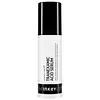What's inside
What's inside
 Key Ingredients
Key Ingredients

 Benefits
Benefits

 Concerns
Concerns

 Ingredients Side-by-side
Ingredients Side-by-side

Water
Skin ConditioningButylene Glycol
HumectantGlycerin
HumectantAscorbyl Glucoside
AntioxidantTranexamic Acid
AstringentEuterpe Oleracea Fruit Extract
1-Methylhydantoin-2-Imide
Skin ConditioningSodium Acrylates Copolymer
Phenoxyethanol
PreservativeCarbomer
Emulsion StabilisingSodium Hydroxide
BufferingCetearyl Olivate
Benzyl Alcohol
PerfumingSorbitan Olivate
EmulsifyingHydroxyethyl Acrylate/Sodium Acryloyldimethyl Taurate Copolymer
Emulsion StabilisingLecithin
EmollientSqualane
EmollientEthylhexylglycerin
Skin ConditioningSodium Gluconate
Skin ConditioningPolysorbate 60
EmulsifyingDehydroacetic Acid
PreservativeLactobacillus Ferment
Skin ConditioningSorbitan Isostearate
EmulsifyingWater, Butylene Glycol, Glycerin, Ascorbyl Glucoside, Tranexamic Acid, Euterpe Oleracea Fruit Extract, 1-Methylhydantoin-2-Imide, Sodium Acrylates Copolymer, Phenoxyethanol, Carbomer, Sodium Hydroxide, Cetearyl Olivate, Benzyl Alcohol, Sorbitan Olivate, Hydroxyethyl Acrylate/Sodium Acryloyldimethyl Taurate Copolymer, Lecithin, Squalane, Ethylhexylglycerin, Sodium Gluconate, Polysorbate 60, Dehydroacetic Acid, Lactobacillus Ferment, Sorbitan Isostearate
Water
Skin ConditioningGlycolic Acid
BufferingGlycerin
HumectantCaprylic/Capric Triglyceride
MaskingDimethicone
EmollientSodium Hydroxide
BufferingHdi/Trimethylol Hexyllactone Crosspolymer
Diisopropyl Sebacate
EmollientC13-16 Isoparaffin
SolventPolyacrylate Crosspolymer-6
Emulsion StabilisingDimethyl Isosorbide
SolventAscorbic Acid
AntioxidantUrea
BufferingYeast Amino Acids
HumectantTrehalose
HumectantInositol
HumectantTaurine
BufferingBetaine
HumectantGlutathione
Tetrahexyldecyl Ascorbate
AntioxidantCetearyl Isononanoate
EmollientHydroxyethyl Acrylate/Sodium Acryloyldimethyl Taurate Copolymer
Emulsion StabilisingOleyl Alcohol
EmollientSilica
AbrasiveHexylresorcinol
AntimicrobialPolysilicone-11
Triheptanoin
Skin ConditioningPolyisobutene
Marrubium Vulgare Meristem Cell Culture
Skin ProtectingZanthoxylum Bungeanum Fruit Extract
Skin ConditioningHydrolyzed Verbascum Thapsus Flower
AntioxidantButylene Glycol
HumectantMica
Cosmetic ColorantHexylene Glycol
EmulsifyingSodium Surfactin
CleansingXymenynic Acid
EmollientTocopheryl Acetate
AntioxidantPEG-7 Trimethylolpropane Coconut Ether
EmulsifyingTerminalia Ferdinandiana Fruit Extract
AntioxidantSorbitol
HumectantTin Oxide
AbrasiveXanthan Gum
EmulsifyingT-Butyl Alcohol
PerfumingChlorella Vulgaris Extract
Skin ConditioningDecyl Glucoside
CleansingGold
Cosmetic ColorantCitric Acid
BufferingCaprylyl Glycol
EmollientPhenoxyethanol
PreservativeEthylhexylglycerin
Skin ConditioningSodium Benzoate
MaskingPotassium Sorbate
PreservativeCI 77891
Cosmetic ColorantWater, Glycolic Acid, Glycerin, Caprylic/Capric Triglyceride, Dimethicone, Sodium Hydroxide, Hdi/Trimethylol Hexyllactone Crosspolymer, Diisopropyl Sebacate, C13-16 Isoparaffin, Polyacrylate Crosspolymer-6, Dimethyl Isosorbide, Ascorbic Acid, Urea, Yeast Amino Acids, Trehalose, Inositol, Taurine, Betaine, Glutathione, Tetrahexyldecyl Ascorbate, Cetearyl Isononanoate, Hydroxyethyl Acrylate/Sodium Acryloyldimethyl Taurate Copolymer, Oleyl Alcohol, Silica, Hexylresorcinol, Polysilicone-11, Triheptanoin, Polyisobutene, Marrubium Vulgare Meristem Cell Culture, Zanthoxylum Bungeanum Fruit Extract, Hydrolyzed Verbascum Thapsus Flower, Butylene Glycol, Mica, Hexylene Glycol, Sodium Surfactin, Xymenynic Acid, Tocopheryl Acetate, PEG-7 Trimethylolpropane Coconut Ether, Terminalia Ferdinandiana Fruit Extract, Sorbitol, Tin Oxide, Xanthan Gum, T-Butyl Alcohol, Chlorella Vulgaris Extract, Decyl Glucoside, Gold, Citric Acid, Caprylyl Glycol, Phenoxyethanol, Ethylhexylglycerin, Sodium Benzoate, Potassium Sorbate, CI 77891
 Reviews
Reviews

Ingredients Explained
These ingredients are found in both products.
Ingredients higher up in an ingredient list are typically present in a larger amount.
Butylene Glycol (or BG) is used within cosmetic products for a few different reasons:
Overall, Butylene Glycol is a safe and well-rounded ingredient that works well with other ingredients.
Though this ingredient works well with most skin types, some people with sensitive skin may experience a reaction such as allergic rashes, closed comedones, or itchiness.
Learn more about Butylene GlycolEthylhexylglycerin (we can't pronounce this either) is commonly used as a preservative and skin softener. It is derived from glyceryl.
You might see Ethylhexylglycerin often paired with other preservatives such as phenoxyethanol. Ethylhexylglycerin has been found to increase the effectiveness of these other preservatives.
Glycerin is already naturally found in your skin. It helps moisturize and protect your skin.
A study from 2016 found glycerin to be more effective as a humectant than AHAs and hyaluronic acid.
As a humectant, it helps the skin stay hydrated by pulling moisture to your skin. The low molecular weight of glycerin allows it to pull moisture into the deeper layers of your skin.
Hydrated skin improves your skin barrier; Your skin barrier helps protect against irritants and bacteria.
Glycerin has also been found to have antimicrobial and antiviral properties. Due to these properties, glycerin is often used in wound and burn treatments.
In cosmetics, glycerin is usually derived from plants such as soybean or palm. However, it can also be sourced from animals, such as tallow or animal fat.
This ingredient is organic, colorless, odorless, and non-toxic.
Glycerin is the name for this ingredient in American English. British English uses Glycerol/Glycerine.
Learn more about GlycerinThis is a synthetic polymer. It helps improve the texture of products by adding thickness and gel-like feel.
It is also an emulsifer, meaning it prevents ingredients such as oil and water from separating. It also helps evenly disperse other ingredients.
Phenoxyethanol is a preservative that has germicide, antimicrobial, and aromatic properties. Studies show that phenoxyethanol can prevent microbial growth. By itself, it has a scent that is similar to that of a rose.
It's often used in formulations along with Caprylyl Glycol to preserve the shelf life of products.
Sodium Hydroxide is also known as lye or caustic soda. It is used to adjust the pH of products; many ingredients require a specific pH to be effective.
In small amounts, sodium hydroxide is considered safe to use. However, large amounts may cause chemical burns due to its high alkaline.
Your skin has a natural pH and acid mantle. This acid mantle helps prevent harmful bacteria from breaking through. The acid mantle also helps keep your skin hydrated.
"Alkaline" refers to a high pH level. A low pH level would be considered acidic.
Learn more about Sodium HydroxideWater. It's the most common cosmetic ingredient of all. You'll usually see it at the top of ingredient lists, meaning that it makes up the largest part of the product.
So why is it so popular? Water most often acts as a solvent - this means that it helps dissolve other ingredients into the formulation.
You'll also recognize water as that liquid we all need to stay alive. If you see this, drink a glass of water. Stay hydrated!
Learn more about Water